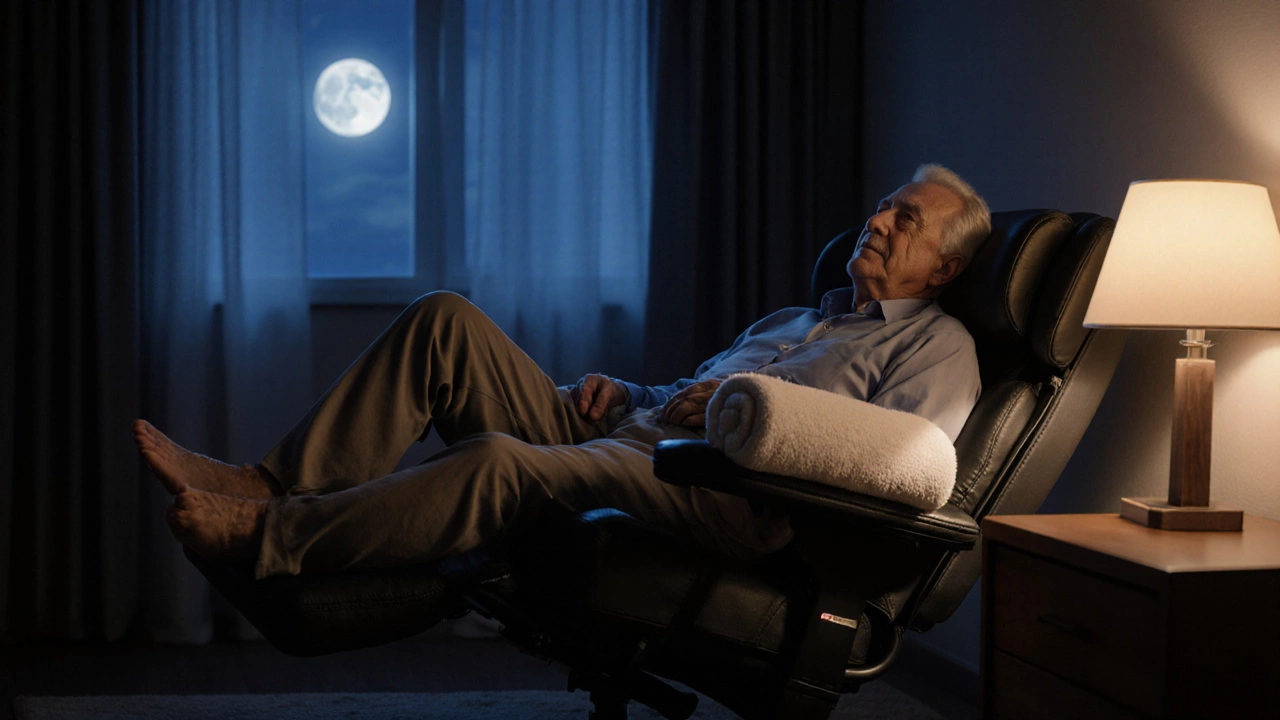
Is It Safe to Sleep in a Recliner Every Night?
Sleeping in a recliner every night isn't ideal for your spine or circulation, but it can be safe with the right setup. Learn when it's okay-and when to switch back to a bed.
When you recliner chair sleep, a seated position that leans back with leg support, often used for rest or relaxation. Also known as sleeping in a reclining chair, it’s a common choice for people with back pain, acid reflux, or breathing issues—but it’s not always the healthiest habit. Many assume a recliner is just a cozy spot to nap, but if you’re using it regularly for full-night sleep, your body might be paying a price.
The problem isn’t the recliner itself—it’s how most people use it. A poorly designed recliner forces your spine into a C-curve, squashes your hips, and cuts off blood flow to your legs. That’s why so many people wake up with leg aches, pain or discomfort in the lower limbs caused by prolonged sitting with poor circulation. Also known as nighttime leg pain, it’s often linked to how you sit before bed. Studies show that sitting with knees higher than hips for long periods slows circulation, leading to swelling, cramps, or even deep vein thrombosis in extreme cases. And if your recliner lacks proper lumbar support, your lower back takes the brunt—leading to stiffness that makes walking feel like climbing stairs the next morning.
Not all recliners are built the same. The ones chiropractors recommend, recliners with adjustable support zones designed to align the spine and reduce pressure on joints. Also known as ergonomic recliners, they feature zero-gravity positioning, firm cushioning, and adjustable footrests that let your legs rest level with your heart. These aren’t luxury extras—they’re medical-grade tools for people who need to sleep upright due to sleep apnea, pregnancy, or spinal conditions. If you’re using a soft, saggy recliner as your main bed, you’re not resting—you’re reinforcing bad posture.
There’s also the issue of movement. When you sleep in a recliner, your body doesn’t shift the way it does in a mattress. That lack of motion traps fluids, stiffens muscles, and reduces oxygen flow to tissues. Over time, this can make you feel more tired, not less. But if you switch to a recliner that encourages neutral spine alignment and lets you adjust your angle throughout the night, you might actually sleep better than on a flat surface.
What you’ll find below are real stories and practical guides from people who’ve turned their recliner habits around. Some learned how to fix their leg pain by changing their angle. Others discovered why their back hurt every morning—and how a $20 pillow made all the difference. There are tips for seniors, parents with reflux, and anyone who’s ever woken up stiff from a nap in their favorite chair. These aren’t generic advice pieces—they’re fixes that worked for real people who refused to accept pain as normal.

Sleeping in a recliner every night isn't ideal for your spine or circulation, but it can be safe with the right setup. Learn when it's okay-and when to switch back to a bed.